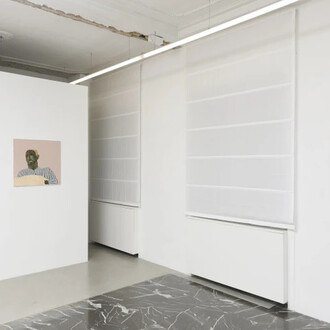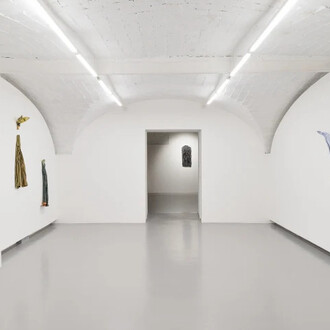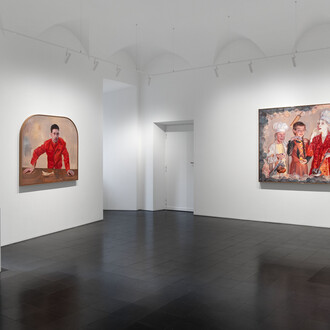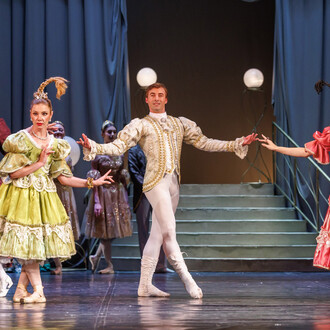«I’ve never been interested in photography, but in images. I believe my work starts where photography ends»
Olivo Barbieri
This apparently paradoxical statement contains a fundamental key to the understanding of the complex research of Olivo Barbieri (Carpi, Modena 1954), one of the most important figures in contemporary photography. Barbieri is mainly known for his analysis on the shape and the iconography of contemporary cities. Yet it would be too simple to reduce his work exclusively to an investigation of urban space and architecture: while this is the framework in which his research forms, it has more to do with an analysis - and a questioning - of the concept of perception, so with our ability to see and interpret reality. Moreover this is the first step in order to understand it. Through an experimental use of photographic instruments and language, Barbieri undermines the usual modes of representation, clearing the way for new and more often than not surprising interpretations: what interests him is not to faithfully reproduce, nor to make the world spectacular, but to translate his personal perception of what’s visible into narration, into a story. The exhibition, conceived as a broad retrospective of his work, is structured in seven thematic sections that allow visitors to follow the development of Barbieri’s thought from the seventies up until the present day: from the early pictures of pinball machines discovered in an abandoned factory that play with the decadent icons of modernity, to estranging nocturnal images of urban settings that are contrasted with visions of paintings in museums (even more ambiguous owing to their appearance of reality); from the exploration of Italian cities and of their outskirts in the 1980s to the numerous trips to China and the Far East; from the first di realtà; dall’esplorazione della provincia italiana degli anni Ottanta, ai ripetuti viaggi in Cina e in Estremo Oriente; dai primi esperimenti di “fuoco selettivo” degli anni Novanta, alle vedute aeree di Roma, Shanghai e Las Vegas, punto di partenza della serie site specific_ che coinvolge più di quaranta città e megalopoli del pianeta. Le sue immagini riprese dall’alto con la tecnica della “messa a fuoco selettiva” (che evidenzia solo alcuni elementi, lasciando volontariamente sfocato il resto della scena), hanno inaugurato un nuovo modo di percepire la città che, grazie all’introduzione consapevole di alcuni “errori” fotografici, ci appare in modo inedito, più simile a un modellino in scala che a un contesto reale.
In quella sottile linea di mezzo tra una fotografia che rappresenta i luoghi e un utilizzo del linguaggio che finisce per decretare l’ambiguità di ogni rappresentazione, si situa la fotografia di Barbieri: in bilico tra il certo e l’incerto, tra il reale e il plausibile, tra il sapere e l’ovvio. Tra l’orizzontalità dei suoi viaggi sulla superficie del pianeta e la verticalità di un percorso che indaga i processi interni del vedere e del conoscere.
Oltre alle sette sezioni descritte, la mostra è arricchita da una serie di focus di approfondimento dedicati rispettivamente alla produzione video (con 9 film in mostra); alla produzione editoriale attraverso la presentazione di una ricca sezione bibliografica; e infine uno spazio dedicato alle fotografie di Barbieri presenti nella Collezione del MAXXI, frutto di committenze realizzate ad hoc, che testimoniano della lunga e proficua collaborazione tra Barbieri e il museo avviata nel 2003, in coincidenza con l’avvio della costruzione del grande edificio progettato da Zaha Hadid. experiments with “selective focus” in the 1990s, to the aerial views of cities such as Rome, Las Vegas and Shanghai, the starting point of his site-specific_ series, which features more than forty towns and megalopolis around the world. His bird-eye shots of cities, taken using the “selective focus” technique (which highlights only some elements, deliberately leaving the rest of the picture out of focus), ushered in a new way of perceiving the city that, thanks to the conscious introduction of photographic “errors,” is presented to us in an unprecedented manner, closer to a scaled down model than to a real place.
The fine line between a photograph that represents a place and the use of a language that ends up decreeing the ambiguity of any representation is where we can position Barbieri’s photography. The seven sections of the exhibition, despite a necessary and inevitable schematization, set out to suggest a reading of his work on the basis of just this fine line: poised between the certain and the uncertain, between the real and the plausible, between knowledge and obvious. Between the horizontality of his journeys on the surface of the planet and the verticality of a journey that investigates the internal processes of seeing and knowing.
As well as these seven sections, the exhibition also features a series of in depth Focus areas that are dedicated respectively to video productions (with 9 films on display); to editorial productions thanks to the presentation of a rich bibliographic section; and also a space dedicated to photos taken by Barbieri that are stored in the MAXXI collection, the result of ad hoc commissions, which demonstrate a long lasting and fruitful collaboration between Barbieri and the museum, which began in 2003, while the huge building designed by Zaha Hadid was under construction.



















